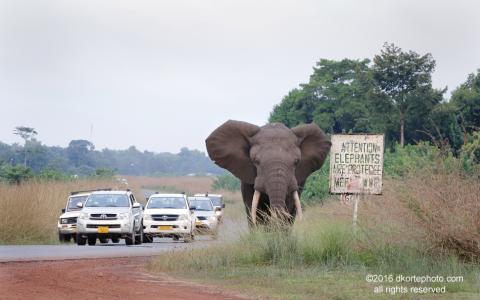News Archive
Filter By
- Abyssinian ground hornbill
- Addax
- Aldabra tortoise
- Allen's swamp monkey
- Alpaca
- American alligator
- American avocet
- American bison
- American flamingo
- American wigeon
- Andean bear
- Aquatic caecilian
- Arapaima
- Asian elephant
- Asian small-clawed otter
- Asian water dragon
- Australian snake-necked turtle
- Bald eagle
- Baltimore oriole
- Barred owl
- Bearded emperor tamarin
- Beaver
- Bennett's wallaby
- Binturong
- Black-and-white ruffed lemur
- Black-crowned night heron
- Black-footed ferret
- Black-tailed prairie dog
- Black-throated blue warbler
- Blue-billed curassow
- Blue crane
- Bobcat
- Brown pelican
- Bufflehead
- California sea lion
- Canvasback
- Cedar waxwing
- Channel catfish
- Cheetah
- Chicken
- Chinese alligator
- Chinese three-striped box turtle
- Clouded leopard
- Collared brown lemur
- Common raven
- Common yellowthroat
- Corals and sea anemones (anthozoa)
- Cow
- Crocodile monitor
- Cuban crocodile
- Dama gazelle
- Degu
- Dunlin
- Eastern indigo snake
- Eastern newt
- Eastern red-backed salamander
- Eastern screech-owl
- Eld's deer
- Electric eel
- Emperor newt
- Fennec fox
- Fishing cat
- Gaboon viper
- Geoffroy's marmoset
- Gharial
- Giant leaf-tailed gecko
- Giant panda
- Goat
- Golden-headed lion tamarin
- Golden lion tamarin
- Gray seal
- Gray wolf
- Green tree python
- Grevy's zebra
- Guam kingfisher (sihek)
- Guam rail (ko’ko’)
- Guinea pig
- Harbor seal
- Hartmann's mountain zebra
- Hawk-headed parrot
- Hellbender
- Home's hinge-back tortoise
- Hooded crane
- Iranian fat-tailed gecko
- Japanese giant salamander
- King vulture
- Komodo dragon
- Kori bustard
- Kunekune pig
- Land hermit crab
- Larger Malay mouse-deer
- Lemur leaf frog
- Lesser hedgehog tenrec
- Lesser kudu
- Lion
- Loggerhead shrike
- Long-tailed chinchilla
- Long-tailed salamander
- Maned wolf
- Meerkat
- Miniature donkey
- Naked mole-rat
- North American porcupine
- North American river otter
- Northern Luzon giant cloud rat
- Northern pintail
- Northern red salamander
- Northern snakehead fish
- Northern tree shrew
- North Island brown kiwi
- Norway rat
- Orangutan
- Orchard oriole
- Ossabaw Island hog
- Ostrich
- Ovenbird
- Pallas's cat
- Panamanian golden frog
- Patagonian mara
- Persian onager
- Philippine crocodile
- Prehensile-tailed porcupine
- Prevost's squirrel
- Przewalski's horse
- Pygmy slow loris
- Red-crowned crane
- Red-fronted lemur
- Red-rumped agouti
- Red-winged blackbird
- Red knot
- Red panda
- Red River hog
- Red ruffed lemur
- Red wolf
- Ring-tailed lemur
- Ruddy duck
- Schmidt's red-tailed monkey
- Scimitar-horned oryx
- Screaming hairy armadillo
- Semipalmated plover
- Semipalmated sandpiper
- Siamang
- Sitatunga
- Sloth bear
- Southern lesser galago
- Southern swamp sparrow
- Southern tamandua
- Spider tortoise
- Striped skunk
- Tanagers
- Tentacled snake
- Tiger
- Titi monkey
- Turkey
- Twig catfish
- Two-toed sloth
- Vietnamese mossy frog
- Virginia opossum
- Von der Decken's hornbill
- Western lowland gorilla
- White-cheeked gibbon
- White-faced saki
- White-naped crane
- White-nosed coati
- Whooping crane
Displaying 2101 - 2125 of 2362 articles.
Red Panda Cubs Thriving at Smithsonian's National Zoo
Two red panda ( Ailurus fulgens) cubs born at the Smithsonian’s National Zoo on June 17 received a clean bill of health during their first veterinary exam yesterday. They appear to be very healthy, strong, active and have good vocalizations. Zoo Veterinarian Margarita Woc-Colburn performed a...
Smithsonian's National Zoo's Front Royal Facility Celebrates Another Baby Boom
The warm weather that heralds the onset of summer brought with it a baby boom at the Smithsonian Conservation Biology Institute in Front Royal, Virginiaa. Red pandas, white-naped cranes, scimitar-horned oryxes, tufted deer, and clouded leopards all had recent births, from May 13 through the middle...
National Zoo's Panda Cub Count: Red Pandas 4, Giant Panda 0
Two red panda cubs were born at the Smithsonian’s National Zoo in Washington, D.C., and two additional cubs were born at the Zoo’s facility in Front Royal, Va., bringing the total to four in 2011. Unfortunately, female giant panda Mei Xiang (may-SHONG) is not pregnant but was experiencing a pseudo...
It's No Sweat for Salt Marsh Sparrows to Beat the Heat if They Have a Larger Bill
Birds use their bills largely to forage and eat, and these behaviors strongly influence the shape and size of a bird’s bill.
State Farm Supports Kids' Farm at the National Zoo
A generous $1.4 million gift from State Farm Insurance to the Smithsonian’s National Zoological Park guarantees that the Kids’ Farm exhibit will remain open for the next five years. The State Farm donation is the largest made to the Zoo since 2007. Earlier this year the Zoo announced plans to close...
Lesli Creedon Named Chief Advancement Officer of the Smithsonian's National Zoo
Lesli A. Creedon has been named chief advancement officer at the Smithsonian National Zoological Park in Washington, D.C., effective July 18. As head of Advancement, Creedon will manage, plan and coordinate all fundraising activities and events of the Zoo, as well as oversee major gifts from...
Five Cheetah Cubs Receive Clean Bill of Health After First Veterinary Exam
The five cheetah cubs born May 28 at the National Zoo’s Smithsonian Conservation Biology Institute in Front Royal, Va., are healthy and thriving, veterinarians reported after the cubs’ first exam on July 12. The six week-old cubs each weigh between 4 and 5 pounds and are growing quickly. The...
Top Reasons to Visit the National Zoo this Summer
Summer has arrived and there are lots of changes, new residents and new opportunities at the Smithsonian’s National Zoo: 1. Three Dozen NEW Reptile Residents: The Zoo’s Reptile Discovery Center is brimming with new additions this summer, including false water cobras, leaf-tailed geckos, green tree...
National Zoo Celebrates Arrival of Whooping Crane
After an 88-year-long hiatus North America’s tallest bird, the statuesque whooping crane ( Grus americana), is once again on exhibit at the Bird House at the Smithsonian’s National Zoological Park. An 11-year-old male whooping crane named Rocky left Homosassa Springs State Park in Florida and is now...
Tracking Dholes (Asian Wild Dogs) in Thailand
Dholes, also called Asian wild dogs ( Cuon alpinus), are approaching the brink of extinction before scientists have even been able to study and potentially protect them. The International Union for Conservation of Nature lists this species as “endangered” with declining populations. Humans hunt...
Smithsonian Conservation Biology Institute and George Mason University Expand Partnership in Groundbreaking Ceremony
Scientists and educators from the Smithsonian Conservation Biology Institute and George Mason University are donning their hard hats and dusting off their shovels to break ground June 29 on a green-design conservation complex that embodies the concept of the living classroom. Since October 2008, the...
Photo Release: Smithsonian's National Zoo's 50th Kori Bustard Chick Hatches
On June 15, history was made at the Smithsonian’s National Zoo’s Bird House when its 50th kori bustard chick ( Ardeotis kori) emerged from its shell. The Zoo has bred kori bustards consistently since 1997, when it became the fourth zoo in the world to hatch them. Many offspring have subsequently...
Photo Release: Cheetah Cubs at the Smithsonian Conservation Biology Institute Appear Healthy
For the first time since five cheetah cubs were born at the Smithsonian Conservation Biology Institute in Front Royal, Va., on May 28, 2011, animal care staff had a few brief moments to weigh and inspect the animals this week. According to staff, the cubs appear to be healthy, doing well and are...
Smithsonian Scientists Find Deadly Amphibian Disease in the Last Disease-free Region of Central America
Smithsonian scientists have confirmed that chytridiomycosis, a rapidly spreading amphibian disease, has reached a site near Panama's Darien region. This was the last area in the entire mountainous neotropics to be free of the disease. This is troubling news for the Panama Amphibian Rescue and...
National Zoo Welcomes Significant Litter of Cheetah Cubs at the Smithsonian Conservation Biology Institute
Five cheetah cubs were born May 28 to 6-year-old Amani at the Smithsonian Conservation Biology Institute in Front Royal, Va. Amani is a dedicated mother according to keepers, who have observed her nursing and grooming the cubs. This litter is particularly significant to the Association of Zoos and...
New Tiger on the Prowl at Smithsonian's National Zoo
The National Zoo’s great cat program has recently expanded with the arrival of 2 1/2-year-old female Sumatran tiger, Damai, who is now out of quarantine and spending time outside in her exhibit where visitors can see her. The National Zoo plans to bring a male tiger in to breed with Damai later this...
Smithsonian Conservation Biology Institute to Help Create Frozen Repository for the Great Barrier Reef
Researchers at the Smithsonian Conservation Biology Institute and partnering organizations will build a frozen repository of Great Barrier Reef coral sperm and embryonic cells. Genetic banks composed of frozen biomaterials hold strong promise for basic and applied research and conservation of...
Ten Giant Clams Find a New Home at the National Zoo
The National Zoo has welcomed several new additions to its . Ten giant clams arrived in February from the Shedd Aquarium in Chicago and after six weeks in quarantine are now on exhibit in the coral tank. These giant clams are of the Tridacna crocea species, the smallest of the giant clam species...
Female Giant Panda's Hormones on the Rise 5/27/2011
Scientists at the Smithsonian’s National Zoo have detected a secondary rise in urinary progesterone levels in the Zoo’s female giant panda Mei Xiang (may-SHONG). This hormone rise indicates that it should be 40 to 50 days before Mei Xiang either gives birth to a cub or comes to the end of a...
Changes in Vegetation Determine How Animals Migrate, Scientists at the Smithsonian's National Zoo Find
The predictability and scale of seasonal changes in a habitat help determine the distance migratory species move and whether the animals always travel together to the same place or independently to different locations, according to a paper published online in February in Global Ecology and...

Field Surgery on Wild Elephants in South Africa
By Jason Gue, Elephant Keeper at the National Zoo If you come to the National Zoo on most days you will find us conducting an elephant husbandry demonstration. During the narration we talk about how elephants are endangered and are in constant competition with humans for the use of limited land and...
Clouded Leopard Cubs Born at National Zoo's Front Royal Campus
A female clouded leopard at the Smithsonian Conservation Biology Institute in Front Royal, Va., gave birth to a litter of two cubs Monday, March 28. Staff had been on a pregnancy watch of the 2-year-old Sita (SEE-ta) for one day. Sita gave birth to the first cub at 1:15 p.m. and the second cub at 1...
Photo Release: National Zoo's Giant Anteater Mother Chooses 'Pablo' as Her Pup's Name
The Smithsonian’s National Zoological Park’s newly-named giant anteater pup Pablo holds on tight as mom Maripi makes her decision. Maripi chose from the names Demetrio, Fausto and Pablo—the top three vote-getters from the Zoo’s website voting poll. These three names were paired with a different food...
Update On Clouded Leopards Born At Zoo's Virginia Campus In March
At a little more than 3 weeks old, both cubs are growing fast and doing great! The female cub weighs 24 ounces and her brother weighs 29 ounces. Both cubs, born March 28 at the Zoo's Smithsonian Conservation Biology Institute in Front Royal, Virginia, have had their eyes completely open for more...
A Mid-summer and Mid-wood Bird
Many people may have heard or recognize the, teacher teacher teacher teacher song of the ovenbird ( Seiurus aurocapilla) as they walk through forested areas in North America during the spring and summer months. The ovenbird's song signifies late spring and early summer as they arrive to northern...
